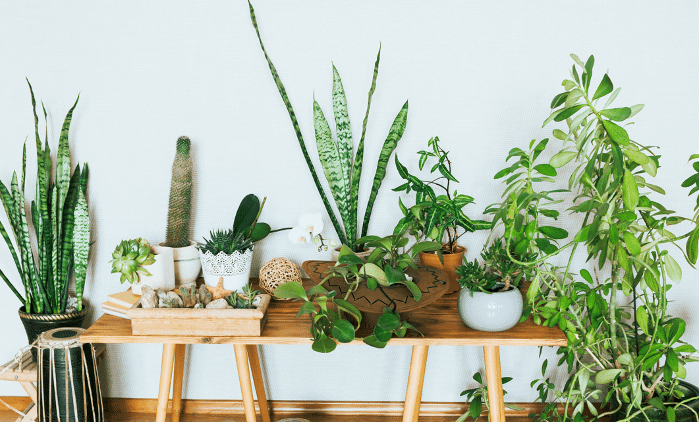Indoor air pollution is a threat to human health and is responsible for 3.8 million deaths annually. Since most people spend as much as 90% of their time indoors, mainly in the workplace, schools, or at home, it’s important to identify and reduce harmful pollutants. Research shows that both short- and long-term exposure can promote a variety of health problems including cardiorespiratory diseases, some cancers, and neurological problems.
How Indoor Air Pollution Happens
Indoor air pollutants can be generated indoors through activities such as cooking, smoking, use of consumer and cleaning products, and emissions from furniture and building materials.
Reduce the Use of Everyday Items that Pollute
Aerosols (pressurized chemicals)
Avoid using any products in an aerosol spray, such as hairspray, antiperspirants, cleaning products, room deodorizers, spray paints, sunscreens, and bug sprays. If you stop using half of the products you use daily, you’ll reduce your body burden by 50%. That adds up over time.
Household Cleaning Products
Most chemicals in ordinary household cleaners are dangerous and unnecessary. This includes all-purpose cleaners, floor and carpet cleaners, dishwashing and laundry detergents, chlorine bleach, window cleaners, mold/mildew removers, and drain cleaners. There are many non-toxic alternatives sold in stores that work great. Or, learn how to make cleaners using items such as white vinegar, lemon juice, baking soda, and castile soap (see recipe below).
Candles, Incense, and Air Fresheners
Candles are often made from paraffin wax (petroleum-derived) and can pollute your indoor environment. Lead in candle wicks is an even bigger concern. Those types of candles were banned in 2003 (though there still may be some out there). Incense is made from natural and synthetic ingredients. The smoke contains an inhalable particulate matter, which a 2009 study found to be carcinogenic (cancer-causing). Commercial air fresheners (especially the plug-in type) can also be toxic.
Furniture and Mattresses
Most furniture, mattresses, and new carpets are treated with fire retardants or contain formaldehyde. Off-gassing of these chemicals can occur for months. For new items, allow them to off-gas outdoors in the sun for a few days before bringing them into your home. Or look for those made from natural fabrics.
Building and Construction Materials
Paint, sealers, varnishes, glues, and other building materials can pollute indoor air. Look for alternatives or allow a period of off-gassing. Companies such as AFM Safecoat provide excellent alternatives.
Tobacco Smoke, Fireplaces, and Gas Stoves
Emissions from wood or tobacco smoke can cause respiratory symptoms, heart attacks, and other health effects. In some cases, the wood being burned can also be toxic. Gas stoves generate invisible by-products from burned natural gas. Nitrogen Dioxide (NO2), which is formed when natural gas is burned in the presence of nitrogen in the atmosphere, has harmful health effects. Unburned natural gas leaks contain benzene, a known carcinogen. Try to eliminate burning items in your home. If you have a gas cooking stove, be sure to use an outside venting system, such as a range hood, to remove potentially harmful substances, smoke, and unwanted odors.
Improve Indoor Air Quality
Fortunately, there are many things you can do to reduce pollutants in your indoor environment aside from reducing exposure to those contaminants listed above.
Use Plants to Purify the Air
Certain plants are effective at reducing indoor air pollution. One study showed that simple potted plants will passively remove NO2 under typical indoor conditions, in some cases by 20 percent. To view a great talk on this subject, search for “How to Grow Fresh Air” (TED 2009).
Open a Window
An easy way to freshen your indoor air is to open windows. Keeping windows shut all day allows a build-up of chemicals and pollutants.
Invest in a High-quality Indoor Air Filter
Choose an air filter with HEPA filtration that filters all indoor air pollutants, including mold, bacteria, and viruses.
Indoor environments can contribute to well-being. Current research on air quality has shifted from outdoor to indoor environments to reflect lifestyle changes and increased urbanization. Remember, many more people are now working from home. As spring arrives, keep these tips in mind before you begin your “spring cleaning” routine.

